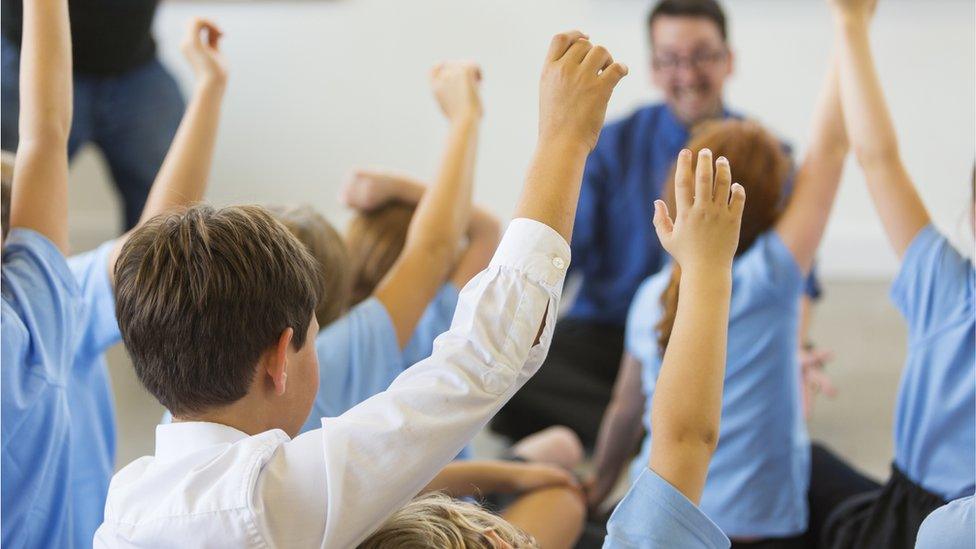Teachers say bigger class sizes 'damage learning'
- Published
- comments

Bigger class sizes are having a negative impact on children's progress, according to a survey - with 95% of teachers saying they think this is the case.
The research was carried out by teachers union the NASUWT, who asked for the views of 3,000 teachers across the UK.
The survey also reported that 75% of teachers said class sizes were getting bigger, with teacher shortages and high numbers of children being registered to each school thought to be causes.
The union is now asking teachers if they want the government to introduce maximum class sizes at all key stages of education.
What do you think? Would you like to have a smaller class or are you happy with your class as it is now?
What is the problem with big classes?
Of the 3,000 teachers who took part, nine in 10 said that class sizes were negatively affecting their pupils' progress and attainment and behaviour.
Many teachers also felt they didn't have enough equipment for all the children in their class, with nearly eight out 10 teachers (78%) saying there was not enough learning resources to go round.
The majority of teachers surveyed were concerned that bigger classes were damaging their ability to meet the needs of all pupils, particularly as schools are working to help pupils catch up after the disruption of the coronavirus pandemic.
Other teachers reported children having to sit and work on the floor when classes have been combined due to teacher absences, as there are not enough chairs and desks for everyone.
How much have class sizes been increasing?
Of the teachers reporting increases in class sizes, more than a third (37%) said numbers had grown "significantly".
There are currently restrictions on how big classes can be for younger children, with children aged 5-7 needing to be class of 30 of less.
Do you have a big class? Let us know what some of the positives and negatives are. If you have a smaller class, you can also let us know what that's like for you.
But currently there is no class size rule for older children. According to government data, numbers of children attending primary and nursery schools are at their highest in 2019.
Since then figures have started to drop, but numbers are still increasing in secondary schools, where the levels are not expected to peak until 2024.
What been said about the class size issue?
Dr Patrick Roach, NASUWT general secretary, said: "Increases in class size numbers are having a detrimental impact on both the learning experiences of pupils and the health and safety of teachers and students.
"This situation once again exposes the failure of government oversight over the last decade in relation to pupil place planning or in guaranteeing the additional investment needed to increase teacher numbers. Children and their teachers deserve better."
But a Department for Education (DoE) spokesperson said that class sizes had remained low with an additional one million school places had been created over the past 11 years.
The DoE statement said: "At primary, average class sizes decreased in 2020/21 compared with 2019/20 - the majority of primary schools have 27 pupils or less per class.
"At secondary school, class sizes remain low, with an average of 22 pupils per class in 2020/21, despite an increase of almost 800,000 pupils in the system since 2010."
- Published10 January 2022
- Published21 February 2022
- Published29 March 2022
